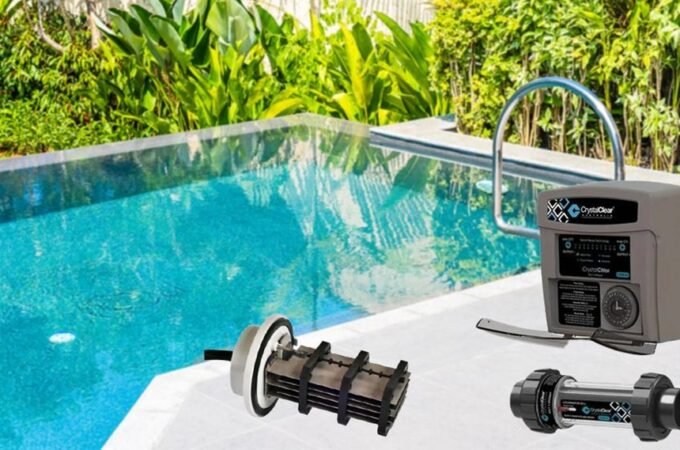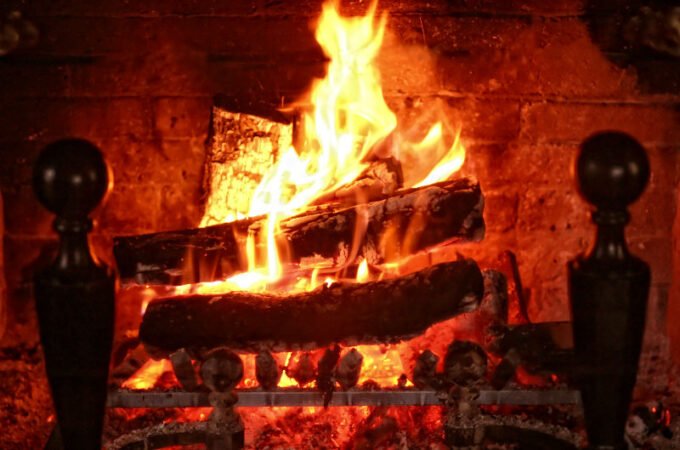
Making a Splash: Comparing Plunge Pools and Swim Spas
Table of Contents
ToggleIntroduction
When it comes to creating a refreshing oasis in your backyard, two popular options that come to mind are plunge pools and swim spas. These luxurious additions not only provide a relaxing space to unwind but also offer a great way to stay active and healthy. In this article, we will compare plunge pools and swim spas, exploring their benefits, size considerations, cost differences, maintenance requirements, popular features and accessories, and the installation process. By the end, you’ll have a better understanding of which option suits your needs and preferences.
Benefits of Having a Plunge Pool
Plunge pools have gained popularity in recent years due to their versatility and aesthetic appeal. These compact pools are designed for a quick and refreshing dip, making them perfect for relaxation and cooling off during hot summer days. Here are a few benefits of having a plunge pool:
- Space-Saving: Plunge pools are ideal for homeowners with limited outdoor space. They can be easily installed in small backyards or even on rooftops, allowing you to enjoy the benefits of a pool without sacrificing valuable space.
- Cost-Effective: Compared to larger swimming pools, plunge pools are more affordable to install and maintain. Their smaller size means less water to heat and fewer chemicals required, resulting in lower utility bills and maintenance costs.
- Versatility: Plunge pools can serve multiple purposes. In addition to providing a relaxing retreat, they can be used for hydrotherapy, aquatic exercise, and even as a focal point for your outdoor entertainment area.
Benefits of Having a Swim Spa
Swim spas combine the best of both worlds – the relaxation of a spa and the exercise benefits of a swimming pool. These innovative pools feature a current that allows you to swim in place, providing a challenging workout without the need for a large pool. Here are some advantages of having a swim spa:
- Compact Design: Swim spas are designed to be more compact than traditional swimming pools, making them a great option for homeowners with limited space. They can easily fit into smaller yards or even be installed indoors, allowing you to enjoy swimming year-round.
- Fitness and Rehabilitation: The powerful current in a swim spa provides an excellent environment for low-impact exercise and rehabilitation. Whether you want to swim laps, practice water aerobics, or recover from an injury, a swim spa offers a controlled environment for all your fitness needs.
- Year-Round Enjoyment: Unlike traditional pools that are only usable during the warmer months, swim spas can be enjoyed throughout the year. They are equipped with heating systems that allow you to adjust the water temperature, ensuring a comfortable swimming experience even in the colder seasons.
Size and Space Considerations for Plunge Pools and Swim Spas
When deciding between a plunge pool and a swim spa, it’s essential to consider the size and space requirements of each option. Plunge pools are typically smaller, ranging from 4 to 7 meters in length and 2 to 3 meters in width. They are ideal for compact yards or areas where space is limited. On the other hand, swim spas come in various sizes, ranging from 3 to 6 meters in length and 2 to 3 meters in width. They offer more flexibility in terms of size, making them suitable for both small and medium-sized backyards.
To determine the right size for your needs, consider how you plan to use the pool or spa. If you primarily want a space to cool off and relax, a plunge pool may be sufficient. However, if you’re looking for a pool that allows for swimming and exercise, a swim spa with a larger size would be more appropriate. Additionally, take into account the available space in your yard and any local regulations or permits required for installation.
Cost Comparison Between Plunge Pools and Swim Spas
Cost is an essential factor to consider when deciding between a plunge pool and a swim spa. The price of each option can vary depending on factors such as size, materials, features, and additional accessories. Here’s a general cost comparison to give you an idea of what to expect:
- Plunge Pools: The cost of a plunge pool typically ranges from $10,000 to $30,000. Factors that can affect the price include the size of the pool, the type of materials used for construction, the complexity of the installation process, and any additional features or accessories.
- Swim Spas: Swim spas tend to be more expensive than plunge pools, with prices ranging from $15,000 to $40,000. The price can vary depending on the size of the swim spa, the quality of the materials, the type of current system, and any additional features such as lighting, jets, or entertainment systems.
It’s important to note that these are just general estimates, and the final cost will depend on your specific requirements and the region you live in. Consider your budget and long-term financial commitments before making a decision.
Maintenance and Upkeep of Plunge Pools and Swim Spas
Proper maintenance is crucial for ensuring the longevity and functionality of your plunge pool or swim spa. Here are some maintenance considerations for both options:
- Water Quality: Regularly test and balance the water chemistry to keep it safe and sanitary. This involves monitoring pH levels, alkalinity, and chlorine or bromine levels. Depending on your preference, you may choose to use traditional chemical treatments or explore alternative options such as saltwater systems.
- Filtration and Cleaning: Clean the filters regularly to ensure optimal filtration and remove any debris or contaminants. Skim the surface of the pool or spa to remove leaves, insects, and other floating objects. Additionally, brush the walls and floor to prevent the buildup of algae or bacteria.
- Winterizing: If you live in a region with cold winters, it’s important to properly winterize your pool or spa to prevent damage from freezing temperatures. This includes draining the water, protecting the equipment, and covering the pool or spa to keep it clean and protected during the off-season.
Remember to follow the manufacturer’s guidelines and recommendations for maintenance and consult with a professional if needed. Regular maintenance will not only keep your pool or spa in optimal condition but also ensure a safe and enjoyable experience for years to come.
Popular Features and Accessories for Plunge Pools and Swim Spas
Both plunge pools and swim spas offer a range of features and accessories to enhance your experience and customize your pool or spa. Here are some popular options to consider:
- Heating Systems: Ensure year-round enjoyment by adding a heating system to your pool or spa. This allows you to adjust the water temperature to your preference, making it comfortable in any season.
- Jets and Massage Features: Many swim spas come equipped with jets that provide a soothing massage experience. These jets can target specific areas of your body, helping to relieve muscle tension and promote relaxation.
- LED Lighting: Add a touch of ambiance and create a stunning visual effect with LED lighting. Whether you want to set a relaxing mood or create a vibrant atmosphere for entertaining guests, LED lights can transform the look of your pool or spa.
- Covers and Enclosures: Protect your pool or spa from debris and the elements by investing in a cover or enclosure. This not only keeps the water clean but also prolongs the lifespan of your pool or spa by preventing damage from weather conditions.
Installation Process for Plunge Pools and Swim Spas
The installation process for plunge pools and swim spas can vary depending on factors such as site preparation, access to the installation area, local regulations, and the complexity of the project. Here is a general overview of the installation process:
- Site Preparation: Clear the area where the pool or spa will be installed, ensuring the ground is level and stable. Remove any obstacles, trees, or plants that may interfere with the installation process.
- Excavation and Construction: Dig the hole for the pool or prepare the base for the swim spa. This may involve using heavy machinery or hand excavation, depending on the size and depth of the pool or spa.
- Electrical and Plumbing: Connect the necessary electrical and plumbing components to ensure proper functioning of the pool or spa. This may require the assistance of a licensed professional to ensure compliance with safety regulations.
- Installation and Finishing: Install the pool or swim spa, making sure it is level and secure. Finish the surrounding area with decking, coping, or landscaping to create a seamless and aesthetically pleasing look.
It’s important to hire a reputable and experienced contractor for the installation process to ensure that all necessary steps are followed correctly. They will be able to guide you through the process and address any specific requirements or challenges unique to your project.
Choosing Between a Plunge Pool and Swim Spa – Factors to Consider
When it comes to choosing between a plunge pool and a swim spa, several factors should be considered to determine the best option for your needs. Here are some key considerations:
- Space and Budget: Evaluate the available space in your yard and your budget constraints. Plunge pools are generally more cost-effective and require less space, while swim spas offer more versatility and fitness benefits but come at a higher price point.
- Intended Use: Determine how you plan to use the pool or spa. If you primarily want a relaxation space with occasional dips, a plunge pool may be sufficient. However, if you’re looking for a pool that allows for swimming and exercise, a swim spa would be the better choice.
- Maintenance and Upkeep: Consider the maintenance requirements and ongoing costs associated with each option. Plunge pools are generally easier to maintain and have lower operating costs, while swim spas may require more regular maintenance due to their larger size and additional features.
- Personal Preferences: Lastly, consider your personal preferences and lifestyle. Think about the aesthetics, features, and overall experience you desire from your pool or spa. Do you prefer a compact and intimate space or a larger area to swim and exercise? Answering these questions will help you make a more informed decision.
Conclusion
In conclusion, both plunge pools and swim spas offer unique advantages and can transform your backyard into a luxurious oasis. Plunge pools are space-saving, versatile, and cost-effective, making them ideal for relaxation and cooling off. Swim spas, on the other hand, provide the benefits of a swimming pool and spa in a compact design, allowing for year-round fitness and enjoyment. Consider factors such as size, cost, maintenance, and personal preferences when choosing between the two. Ultimately, the right option will depend on your specific needs, budget, and available space. So dive in and make a splash with the perfect pool or spa that suits your lifestyle. Zgrada Pools, excel in creating bespoke plunge pools, combining expertise in concrete swimming pool construction with innovative design.





